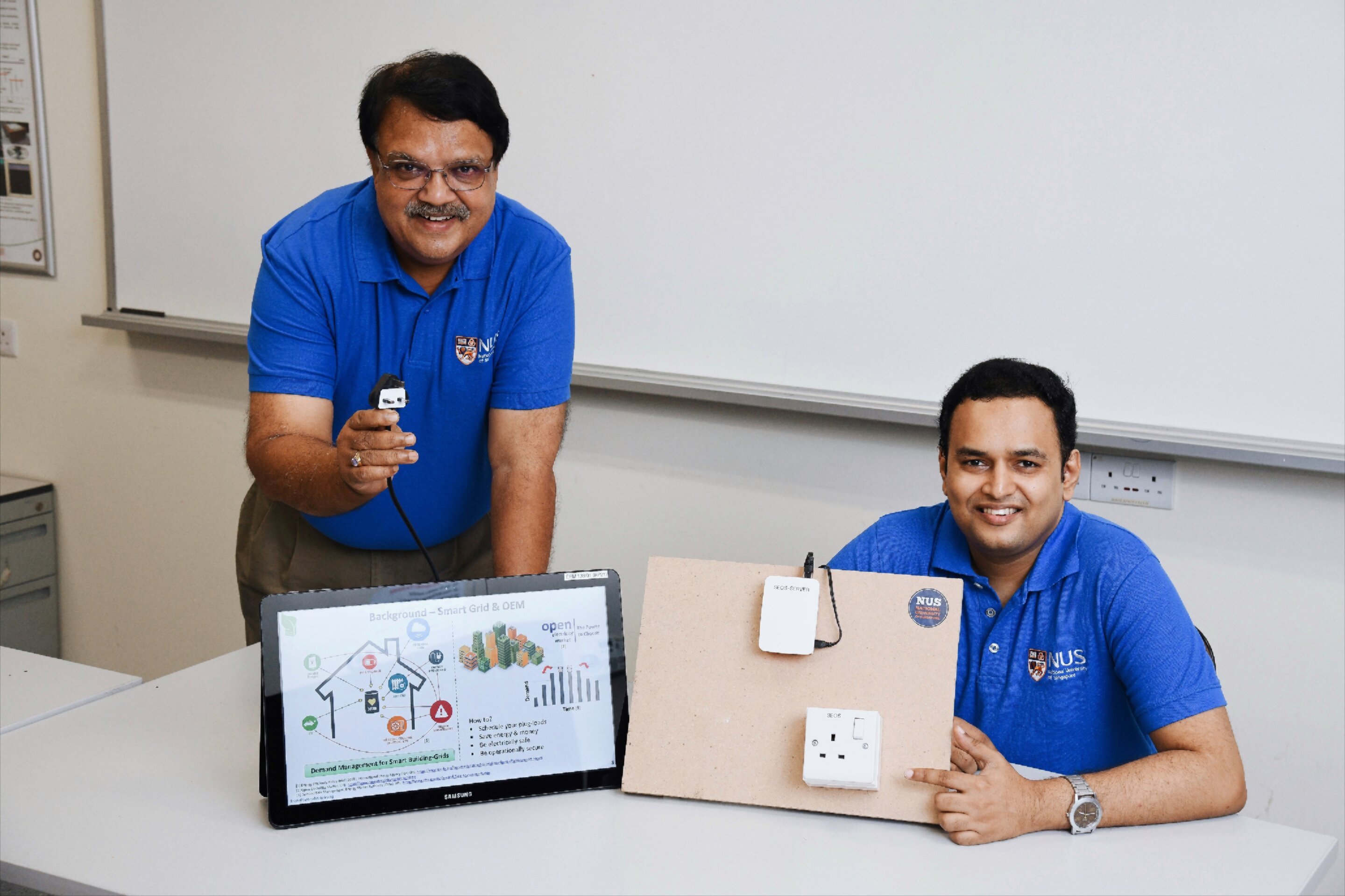#Engineers make smart plugs smarter

“#Engineers make smart plugs smarter”

Singapore is in the midst of its Smart Nation transformation, and researchers from the National University of Singapore (NUS) have a new invention that could take it a big step forward.
It is a network of smart electrical sockets controlled by a central computer, optimizing energy use throughout a building or even across buildings. The team that created this was led by Associate Professor Sanjib Kumar Panda from the NUS Department of Electrical and Computer Engineering.
So far, most people have used smart appliances in a very piecemeal way. For example, an appliance, such as a television or an air conditioner, is connected to the Internet, and then controlled remotely from a mobile app. However, this approach is actually inefficient, so the NUS team set out to improve it.
“The current trend is to put a computing unit in every new appliance, which generates a lot of e-waste and drives up costs, so we are avoiding that,” said Dr. Krishnanand Kaippilly Radhakrishnan, who worked with Panda to develop the technology.
Smart Electrical Outlet/Socket (SEOS) system
The NUS researchers’ Smart Electrical Outlet/Socket (SEOS) system monitors and controls every socket in a building in real-time.
Each socket has a chip that communicates with the central server over WiFi. When an appliance is connected, the socket recognizes it through an electronic sticker on the plug, known in the industry as Near Field Communication. This is a concept similar to tapping a person’s staff pass to enter the office. The electrical specifications of the appliance are then called up from a database.
Operators of a SEOS-enabled network can track and quantify how much energy various devices consume—including calculating energy costs—and then configure the system to deliver power only when needed.
The SEOS system can be programmed to completely switch off appliances when not in use, rather than waste electricity by leaving them on idle or standby. Appliances left on when not in use make up 25 percent to 50 percent of a building’s electricity consumption.
The system can also prevent electrical fires by automatically shutting down an appliance when it draws more current than its rating. It can even be a “firewall” for data security by cutting power to unauthorized devices.
“The system can essentially customize the level of safety for the appliance in use,” explained Panda. “The applications of this development are not just for buildings or building owners. This can benefit the busy office workers who rush to work, forgetting to turn off the iron in their haste, or the elderly folk who live alone. Smart sockets will enable anyone to remotely check in how devices are performing, and control them.”
Upgrading an entire building to the SEOS system can be completed fairly quickly by replacing the faceplate of each conventional socket with the SEOS faceplate at about $80 per socket, and label the power plug of the appliances with the electronic stickers. Once installed, the system can potentially save 30 to 60 percent of total plug load energy consumption, depending on the building’s size.
An ‘Internet of Electricals’
Panda and his team of researchers founded ENBED, a startup supported by the NUS Graduate Research Innovation Program (GRIP), to commercialize the SEOS system. The NUS team’s research was funded as part of the SinBerBEST program conducted by the Berkeley Education Alliance for Research in Singapore (BEARS).
The system has passed laboratory tests and will soon be tested on a larger scale. Several potential clients including commercial building owners, designers or operators are interested.
“Many smart products that you can buy have one-time smartness,” said Dr. Krishnanand. “But we are looking at creating the foundation for an ‘Internet of Electricals’ with evolvable smartness; that is, by connecting multiple electrical appliances through the SEOS system, they can operate in a consolidated manner to provide more smart services to the building users.”
Citation:
Engineers make smart plugs smarter (2021, January 26)
retrieved 27 January 2021
from https://techxplore.com/news/2021-01-smart-smarter.html
This document is subject to copyright. Apart from any fair dealing for the purpose of private study or research, no
part may be reproduced without the written permission. The content is provided for information purposes only.
If you liked the article, do not forget to share it with your friends. Follow us on Google News too, click on the star and choose us from your favorites.
For forums sites go to Forum.BuradaBiliyorum.Com
If you want to read more Like this articles, you can visit our Science category.
